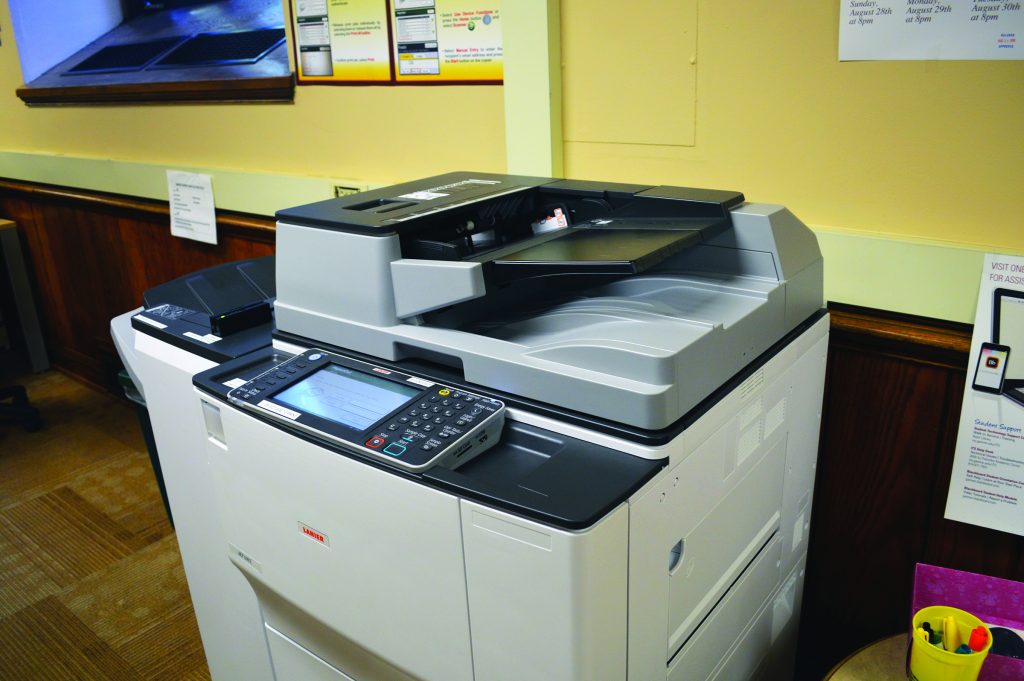This year all Gannon University students received an email explaining that the new printing policy changed the allotted prints from 500 to 600 pages per student each semester. This email came as a shock to many students and left several others confused. Due to ambiguous wording, some students got the wrong impression.
In the email, Gannon’s Information Technology Services (ITS) explained that the department worked with the Student Government Association (SGA) to allot an additional 100 pages, bringing the total to 600 pages per semester.
The email also said that the change comes in part due to the significant rise in cost to the student printing budget. In 2006, an estimated $15,000 was spent on paper and toner and almost double was spent last year, $28,400.
Some students feel this is an unfair policy. According to senior Michael Fujito, a middle level education and theater major, 600 pages is simply not enough.
“Coming from an education major who has gone on field placements in class rooms, I had to use school printers a lot last semester because I brought many handouts to school,” Fujito said. “I imagine it will be even worse when student teaching,”
Due to the high tuition costs, Fujito said he feels Gannon should not place limitations on printing. Sophomore biochemistry major Vince Cross agrees with this.
What many students don’t realize is that some take advantage of this service and print more than needed. Another issue is students are printing out full text books, which alone can easily exceed this quota. Paper alone can be costly and that does not include the costs of toner or maintenance.
According to a source from ITS, it is approximately $25 for one black ink toner cartridge and they typically only get changed once or twice a semester. These cartridges rarely require changing; however, there are at least eight computer labs each equipped with at least one printer. That is at least $400 each semester just on toner alone.
As stated in the email, Gannon put this policy in place to control costs so more services can be offered later on. Some future services include newer copiers and possibly colored prints.
In addition to the costs, the change will cut down waste. Gannon has approximately 4,000 enrolled students and each student is allotted 600 pages each semester.
If all 4,000 students decided to max out the quota, then 2.4 million sheets of paper would be printed. That would be 4.8 million sheets of pages printed in one year.
Keep in mind 200,000 sheets of printer paper weigh about 1 ton. That is 24 tons of paper if everyone on campus maxed out the quota. Now imagine 2 1/2 elephants; that’s how much 24 tons would weigh.
Freshman criminal justice major Rachel Reynolds and freshman communications arts major Justin Karns both agree with the new policy. They both feel that moderation is key to prevent printing abuse. They feel Gannon is being very generous with this quota.
Printing quotas at other colleges are not unheard of. In fact, it is a growing trend. Boston College is a good example of this. It, too, has a strict printing policy allotting students $15 per semester in what the school calls “PrintBucks.”
The $15 per-semester allowance in PrintBucks is equivalent to 500 black and white pages. Every page that is printed over the $15 allotment results in a charge of 3 cents. In addition, double-sided printing is considered one page.
Boston College’s printing policy is very similar to Gannon’s, which allows students to have 600 pages and charge for anything over. For every one-sided page printed, students will be charged 5 cents — and 4 cents if printed on both sides.
Both colleges’ printing policies are put in place for the same reason – both schools are trying to cut down costs while helping the environment.
BRITTINY RAFFERTY
[email protected]












